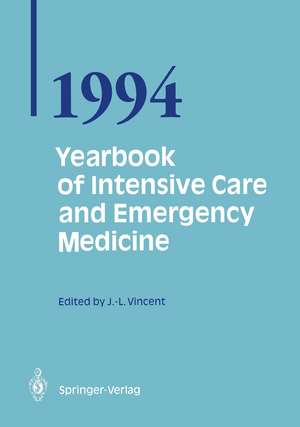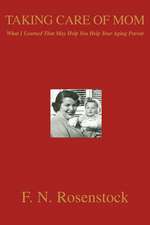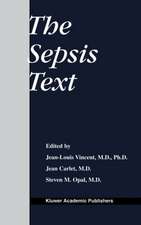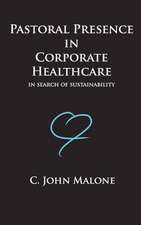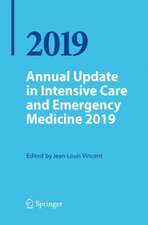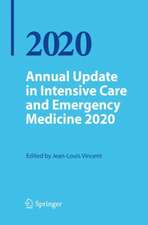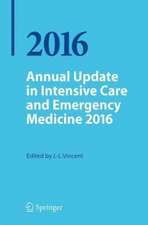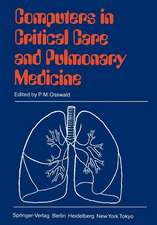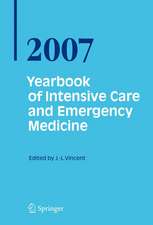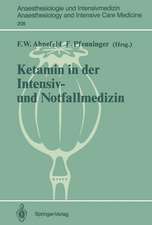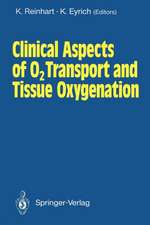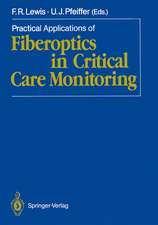Yearbook of Intensive Care and Emergency Medicine 1994: Yearbook of Intensive Care and Emergency Medicine, cartea 1994
Autor Jean Louis Vincenten Limba Engleză Paperback – 9 mar 1994
Preț: 406.57 lei
Preț vechi: 427.97 lei
-5% Nou
Puncte Express: 610
Preț estimativ în valută:
77.82€ • 84.56$ • 65.41£
77.82€ • 84.56$ • 65.41£
Carte tipărită la comandă
Livrare economică 21 aprilie-05 mai
Preluare comenzi: 021 569.72.76
Specificații
ISBN-13: 9783540576136
ISBN-10: 3540576134
Pagini: 868
Ilustrații: XXII, 845 p. 4 illus.
Dimensiuni: 170 x 242 x 46 mm
Greutate: 1.36 kg
Ediția:Softcover reprint of the original 1st ed. 1994
Editura: Springer Berlin, Heidelberg
Colecția Springer
Seria Yearbook of Intensive Care and Emergency Medicine
Locul publicării:Berlin, Heidelberg, Germany
ISBN-10: 3540576134
Pagini: 868
Ilustrații: XXII, 845 p. 4 illus.
Dimensiuni: 170 x 242 x 46 mm
Greutate: 1.36 kg
Ediția:Softcover reprint of the original 1st ed. 1994
Editura: Springer Berlin, Heidelberg
Colecția Springer
Seria Yearbook of Intensive Care and Emergency Medicine
Locul publicării:Berlin, Heidelberg, Germany
Public țintă
Professional/practitionerCuprins
Sepsis.- Infection and the Host Septic Response: Implications for Clinical Trials of Mediator Antagonism.- Cytokine Markers of the Human Response to Sepsis.- Heat Shock Proteins in Critical Illness: Markers of Cellular Stress or More?.- A Prophylactic Approach towards Postoperative Endotoxemia.- The Protective Role of Interleukin-10 in Sepsis.- Treatment of Sepsis: A New Look at Prostacyclin.- Nitric Oxide in Sepsis and ARDS.- Is Inhibition of Nitric Oxide Synthase an Appropriate Therapeutic Target in Sepsis?.- Nitric Oxide Synthase Inhibition in Septic Shock.- Role of Nitric Oxide in the Regulation of Vascular Tone in Septic Shock.- Administration of Methylene Blue in Septic Shock: Is it Beneficial?.- Effects of Endogenous Nitric Oxide on the Pulmonary Circulation.- Inhalation of Nitric Oxide in Severe ARDS.- Oxygen Delivery.- Nuclear Magnetic Resonance Spectroscopy: Insights into Experimental Septic Shock.- Temporal Patterns of DO2 and V?O2: Predictions of Outcome and Therapeutic Goals.- The Cardiac Index/Oxygen Extraction Diagram to Assess Hemodynamic Status.- A New Debate: Colloid versus Colloid?.- Inotropic Agents.- Effects of Catecholamine Therapy on Regional Blood Flow and Tissue Oxygenation in Septic Shock.- Gastric Tonometry.- Regional versus Global Indicators of Tissue Oxygenation.- Recent Advances in Gastric Tonometry.- Management of Gastric Intramucosal Acidosis.- Oxygen Carriers.- The Optimal Hematocrit.- The Role of Perfluorochemicals in Surgery and the ITU.- The Pressor/Perfusion Effect of Diaspirin Cross-Linked Hemoglobin.- Hemoglobin-based Red Cell Substitutes: Preliminary Human Studies.- Cardiac Crisis.- Ischemic Preconditioning: A Pronounced and Endogenous Form of Protection against Tissue Injury.- The Investigation of the Patient withPalpitations.- Cardiogenic Shock: How should we Revascularize?.- Poisoning with Class I and IV Antiarrhythmic Agents.- Perioperative Cardiac Complications.- Perioperative Mortality is Reduced by Cardiovascular Optimization.- Perioperative Metabolic and Hemodynamic Changes in Adults and Children.- Heart-Lung Interactions.- Defining the Limits of Heart-Lung Interactions.- Pulmonary Hypertension in Congenital Heart Diseases.- Atrial Natriuretic Peptide Modulates Pulmonary Pathophysiology.- CPR.- Priorities in Advanced Cardiac Life Support.- Glucose Worsens and Tirilizad Improves Neurologic Outcome of CPR.- Ethical Issues in Resuscitation.- Acute Respiratory Failure.- Acute Respiratory Failure in Infants and Children: Status Report on Gas Exchange Techniques and Outcome.- Stress Proteins and Acute Lung Injury.- Acute Lung Injury: Experimental Approaches to Treatment.- Bedside Detection of Microvascular Injury and Edema in the Lungs.- Adult Respiratory Distress Syndrome (ARDS) in Infants and Children.- Risk Factors and Outcome in ARDS.- Lung Mechanics.- Intrinsic PEEP.- Measurement of Lung Volumes and Gas Distribution during Mechanical Ventilation.- Mechanical Ventilation.- Protocol Control of Mechanical Ventilation in ARDS.- Tracheal Gas Insufflation as an Adjunct to Conventional Ventilation.- Advantages and Rationale for Pressure Controlled Ventilation.- Humidification and Filtration.- Use of Heat and Moisture Exchangers in Mechanically Ventilated Patients.- Non-Invasive Positive Pressure Ventilation for Acute Respiratory Failure.- Chronic Obstructive Pulmonary Disease.- Work of Breathing in COPD.- Gas Exchange in COPD.- Infectious Aspects of Acute Exacerbations of COPD.- Severe Infections.- Antibiotic-Resistant Pathogens in the ICU: Epidemiology and Control.- Severe Community-Acquired Pneumonia: A New Clinical Entity.- Pneumonia: Cause or Symptom of Postinjury Multiple Organ Failure?.- Candida Infections in Critically Ill Patients.- Neurologic Crisis.- Intracranial Pressure: Its Measurement and Treatment.- New Insights in the Management of Acute Neurologic Crises using Jugular Bulb Oximetry.- Bedside Estimation of Cerebral Blood Flow.- Acquired Neuromuscular Abnormalities in Intensive Care Patients.- Renal Failure.- Continuous High Flux Dialysis (CHFD).- The Hepatorenal Syndrome.- Acid-Base Balance.- Use of the Anion Gap in Intensive Care and Emergency Medicine.- Diagnostic Work-up of Severe Metabolic Acidosis.- Intoxications.- Basis of Kinetics in Clinical Toxicology.- Acute Pulmonary Damage by Toxic Substances: New Aspects of Therapy.- Severe Trauma.- Prehospital Critical Care Services.- The Prevention of Tetanus: The Story of 100 Years.- Metabolic Support.- Glutamine Parenteral Nutrition in Critical Illness.- Catabolism — Potential for Amelioration by Growth Factors.- Evaluation, Monitoring and Outcome Prediction.- Small Trials in Critical Care Medicine: What can Intensivists learn from them?.- Dutch Specification Study of an Intensive Care Information System.- The SAPS II: A New Score with New Objectives.- The MPM II System for ICU Patients.- Ethics.- Care of the Dying Patient.- Quality of Life after Intensive Care.
